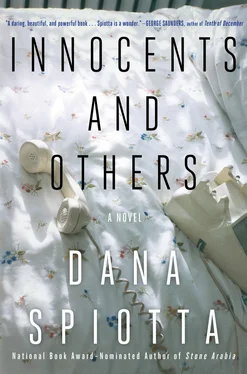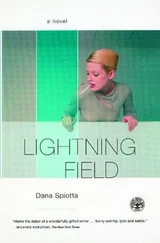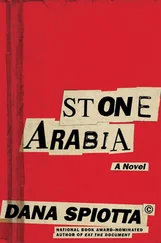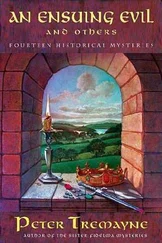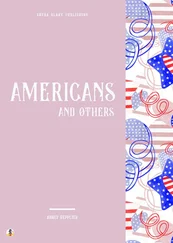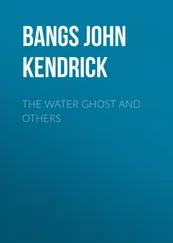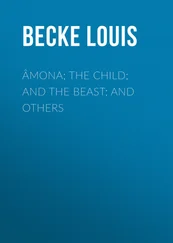Meadow discovered that she could get to the tracks in a number of unprotected places in between stations. Sometimes she had to climb over a fence. At first she brought her lightweight Super 8 camera, but later she used her video camcorder. Other times she set up her expensive 16 mm camera and made Deke come to record sound. Oh, the sound of a train! The first rhythmic sounds of the approach, the wheels of the train clicking fast against the tracks. The way the rhythm gathered and the volume increased as the train grew closer. It created — a train approaching, that is — its own suspense. Not suspense, exactly. Momentum that intensified and created a need for satisfaction. And then, just as she anticipated, the sound built to a roar. The train went by in a huge rush: the clamor as it rattled the switch track, the whistle announcing its passing if it approached a station, the beeping alarm of the crossing signal if it cut through a road. The passing was a satisfying rush: you were in it, the longed-for moment, the powerful mechanical thing speeding by and dwarfing you. It overwhelmed you, but even in the midst of it you knew it would be over soon. The noise, the movement, the friction of metal on metal: it will all pass you by.
Meadow filmed the trains by lying in the cold wet mud and pointing the camera right at the point of contact of wheels on tracks. She also filmed pointing the camera up at the train from the same vantage. She filmed them from far away, like a train passing in an old country song. She boarded the passenger train in the tiny station in Amsterdam and rode it one stop to Schenectady, then boarded a westbound train back to Amsterdam. She spent the short rides kneeling in the joint between two cars. She stuck her camera close to the gap where she could see and hear the tracks as the train rushed over them. She saw a blur where the ties would be, and the camera lurched when the train lurched. She practiced keeping the camera steady. Then she held her body loosely and let the camera lurch with the train. The mechanical solidity and simplicity, the weight of the train on the track, the power of the constant friction — all of this she wanted to find a way to put in a film. And the longing of the train, the Saturday reproach of a train whistle in the distance that seemed to say, Why are you here and not on a train? Going, going, gone on a train.
Meadow sent her film to a lab in New York City on Forty-fourth Street. She collected the reels and watched them on the editing console in the studio she had set up in the Gloversville warehouse. She marked the film with wax pencil. She had two-minute or eight-minute segments clipped to a wire and hanging around her. She tried the sound out of sync, so that the noise didn’t match the images. She tried it synced, then she varied the volume so the sound dropped in precise places. Then she abandoned the sound she had recorded altogether. Variables, so many of them that they overwhelmed her. Other times the possibilities excited her so much she got up in the middle of the night to work or take notes.
Meadow tried to add some of the Britten music to her films. Then she tried something more repetitive and tense, Steve Reich. Or something lush and melodic, Gershwin. Music can invisibly amplify, or music can be an ironic counterpoint to the images. Music can seduce or make you feel slightly off, uncomfortable. She always thought that a pushy film score was cheating, but she realized maybe she just wanted to eliminate variables to make things simpler. She was simple, plain. She knew nothing. She needed to see movies! How did they use music? Sound effects? Silence? There is true silence — which feels like negative sound, it almost sucks you out — and then there is movie silence with ambient sounds, like breathing and chair scraping. She paired her train images with music bright and nostalgic. Then just the sound of the river, which seemed so pastoral and almost invisible next to the train, but now suddenly had a fighting chance for her attention. She then filmed the outmoded, obsolete, obscure Mohawk River. The train in deep background. She filmed just the river — untrained or pretrained. She cut these together. The river disturbed and obliterated by the train. In a logical sequence. In a sequence of no logical chronology. The left and right expectations resisted. You lose logic, you lose legibility. It unnerves. Yes! She shot the untrained, unmanned world: birds, river, the wind on the leaves. The river roar made faint by the train roar. But then it returns after the train passes. If she took away the sound and let the train pass in the background without its steady clack clack clack, it still found its rhythm in your head. You supplied the clack clack clack from a hundred other movie or real-life trains. You could do that, play on the sounds already in people’s heads. The memory of trains. But not even that: the memory of trains seen in movies. Was it fair or good or right to count on — even consider — an assumption of memory? But isn’t that what all film counted on, a kind of shared memory of everything we have seen in the movies?
Notes:
My Memory of Trains
Night Mail , 1936, Basil Wright and Harry Watt. Night Train , 1959, Jerzy Kawalerowicz. The train ride in Hitchcock’s Shadow of a Doubt in which creepy Uncle Charley tries to kill his on-to-him niece. Teresa Wright lets Joseph Cotten die by falling (or pushing him?) into the path of another train. North by Northwest ’s train into a tunnel. Strangers on a Train. Just a private place for people to meet with no one the wiser. The spinning, unhinged carousel is really the central mechanical object in that one. Okay, no more Hitchcock. What else?
The Lumière Brothers. The forty-second film of a train arriving at La Ciotat Station. Entitled The Arrival of a Train at La Ciotat Station, 1895. People screamed and ran out of the theater because film was not understood yet, and the conventions of cinema were not yet invented. The technology was a stunning shriek of the new. Pacific 231 , the short film that used Arthur Honegger’s steam locomotive symphony, which itself was inspired by the train in Abel Gance’s film La Roue (which makes it a memory of someone else’s remembering). La Bête Humaine , of course. The Tall Target , 1951, Anthony Mann. All steam gusts, night whistles, and steady clicks. The train chugging across the desert, blown up and raided, that a glorious Peter O’Toole climbs atop in Lawrence of Arabia , his white cloak billowing in the wind as he starts to walk and play for the camera. Lean shoots his film level to O’Toole’s suede boots, defiant and above it all, as they walk. There were trains in other Lean films: Brief Encounter, The Bridge on the River Kwai. There is the train in The Wild Bunch. Or in Once Upon a Time in the West , 1968. Dozens of Westerns. Jean-Louis Trintignant having sex on a train in The Conformist , psychedelic trains in Vera Chytilová’s Daisies. What else?
Oh! The great train scene in Pather Panchali , Satyajit Ray’s film of poor children in 1950s India. The girl and her little brother are in a vast field of wheat or rice. No one in any direction but these little people. The far horizon is a blank except for the interruption of telephone wires, the only industrial thing in the landscape. They walk. No music. We hear only the wind in the grass. They are made tiny by the growth, lost in it. First the sister hears it. She stops. Then we hear it. The distant train. We see the locomotive in the far corner of the horizon, black steam pouring out of the smokestack. It is approaching. The children start to run toward the train, through the high grass. The girl trips, gets up. They run and run and make it to the train as it passes. The train is loud and Ray cuts to a wheel-level view of the children. We are on the other side of the train — it passes between us and the children, and we glimpse them through the gaps in the train’s drive pistons and wheels. It is huge, and we see it as the children see it: massive, loud, fast. And then it is gone. The children have been passed by. We watch them watch it disappear.
Читать дальше
